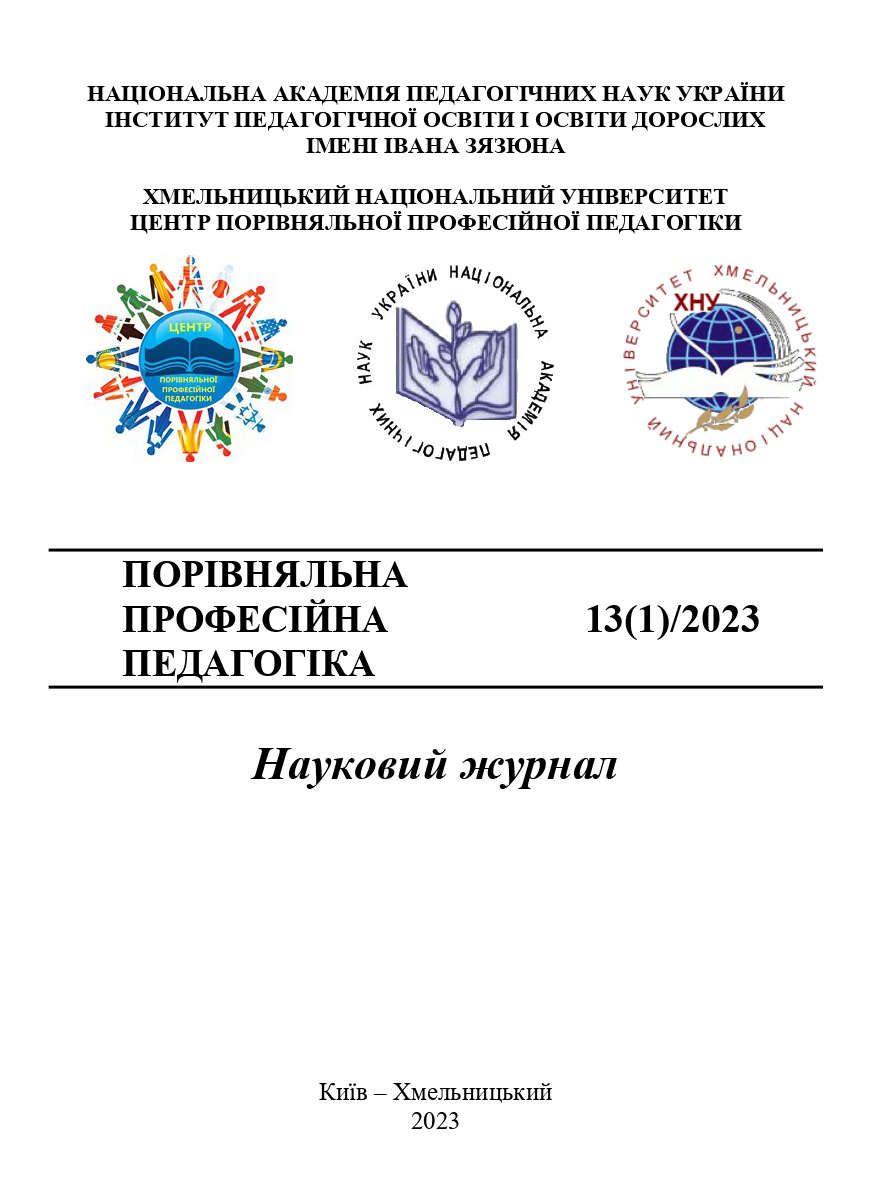INTERCULTURAL COMMUNICATION DURING GERMAN LANGUAGE LESSONS BY MEANS OF AUTHENTIC CARICATURES: FOREIGN TEACHING METHODS
DOI:
https://doi.org/10.31891/2308-4081/2023-13(1)-5Keywords:
creolized text, visualization, verbal and non-verbal parts, humor, didacticization, caricature, foreign language/German lessonAbstract
The article is devoted to consideration of the possibilities of forming foreign language communicative competence by means of authentic German texts – caricatures. Taking into account interests and needs of the modern generation Z, the authors demonstrate the didactic advantages of using authentic caricatures during foreign language lessons, in particular German. It is noted that authentic caricatures reflect the national character of native speakers and contain a large amount of linguistic and regional information, which is extremely valuable while learning a foreign language. Peculiarities of creolized texts are analyzed and advantages of their use during foreign language lessons are considered. It is found out that creolized texts, combining verbal and non-verbal parts, contain a powerful potential for the formation of language, speech and socio-cultural competence and are able to reproduce the peculiarities of the language environment, increase the level of students’ motivation, stimulate effective activity in class, develop critical and creative thinking, etc.
The concept of "caricature" is defined, which is considered as a deliberate parody, satirical or humorous image (mostly graphic) of an event or a person; a type of graphics. It is found out that the main feature of a caricature is a hidden humorous, sometimes ironic or sarcastic character, and its task is to have a visual impact on the reader. An authentic caricature illustrates not only typical communication situations, contains colloquial vocabulary, authentic grammar constructions and other language features, but also reflects socio-cultural, moral and ethical information, in particular the cultural realities of the country and people. The research demonstrates the process of using an authentic caricature during a German language lesson, which involves the following stages: Beschreibung (description), Interpretation (interpretation), Bewertung (evaluation).
References
Завадська, О. В. (2016). Феномен креолізованого тексту: актуальна проблема сучасних лінгвістичних досліджень. Лінгвістичні дослідження, Вип. 43, 163–169.
Карикатура. Енциклопедія сучасної України. Режим доступу http: http://surl.li/ hmffy.
Кононець, Ю. В. (2010). Вербально-візуальна єдність полікодових текстів Проблеми семантики, прагматики та когнітивної лінгвістики, Вип. 18, 186–192.
Крекотень, О. В., Байдак, Л. І. (2019). Технологія використання рекламних текстів на занятті з іноземної мови. Тенденції та перспективи розвитку науки і освіти в умовах глобалізації, Вип. 47, 136–140.
Мороз, П. В. (2013). Використання карикатур в шкільному підручнику історії (методика роботи в умовах дослідницького навчання). Проблеми сучасного підручника, Вип. 13, 147–167.
Сем’ян, Н. В. (2021). Використання креолізованого тексту як навчального засобу на уроках англійської мови в закладах середньої освіти. Інноваційна педагогіка, 31, 62–65.
Федік, Ю. М. (2021). Ключові підходи до дослідження сучасних англомовних карикатур. Вчені записки ТНУ імені В. І. Вернадського. Серія: Філологія. Журналістика, 2, т. 32 (71), 224–229. DOI: https://doi.org/10.32838/2710-4656/2021.2-1/38
Brinitzer, M. (2015). Zack. Deutsch lernen mit Comics. Stuttgart: Klett Sprachen GmbH.
Frick, L., Weber, R. (Red.) (2005). Gegen den Strich – Karikaturen zu zehn Themen. Stuttgart: Neckar-Verlag GmbH.
Kuzminykh, K. (2014). Comics und graphic novels im multikulturellen Deutschunterricht. Glottodidactica, 41/2, 75–86.
Laidvee, M., Lina, K., & Jõgi, S. (2019). Produktwerbung auf Deutsch. Septentrio Educational, 1. DOI: https://doi.org/10.7557/8.5196
Palandt, R. (2014). Comics Geschichte, Struktur, Interpretation. In: M. Hieronimus (Hrsg.), Visuelle Medien im DaF-Unterricht (Materialien Deutsch als Fremdsprache), Bd. 90, 77-118.
Göttingen: Universitätsverlag Göttingen. Genommen von https://univerlag.uni-goettingen.de/bitstream/handle/3/isbn-978-3-86395-174-0/Matdaf90_/ Hieronimus_978-3-86395-174-0.pdf?sequence=4&
Velica, I., Parajdi, O. (2010). Werbung im Unterricht. In: M. Cluj (Ed.), Werbung. Die alltägliche Macht der Sprache, 155-178.
Utri, R. (2013). Das interkulturelle Potenzial von Karikaturen im DaF-Unterricht. Glottodidactica. An International Journal of Applied Linguistics, tom XXXXII, 35-45. Genommen von http://surl.li/htdmr.


